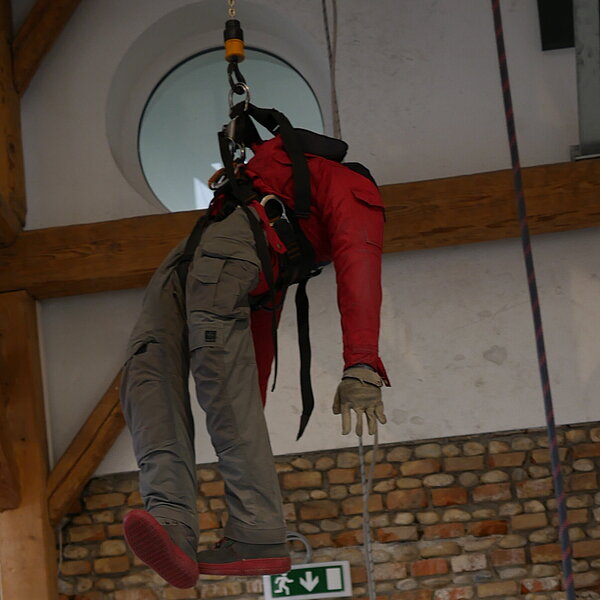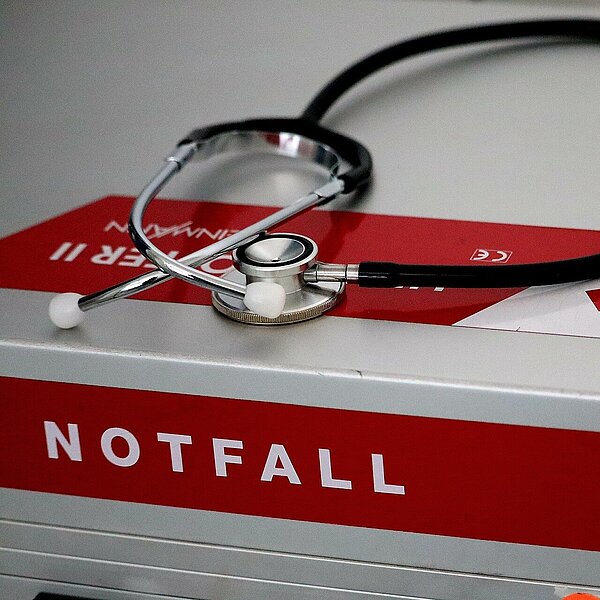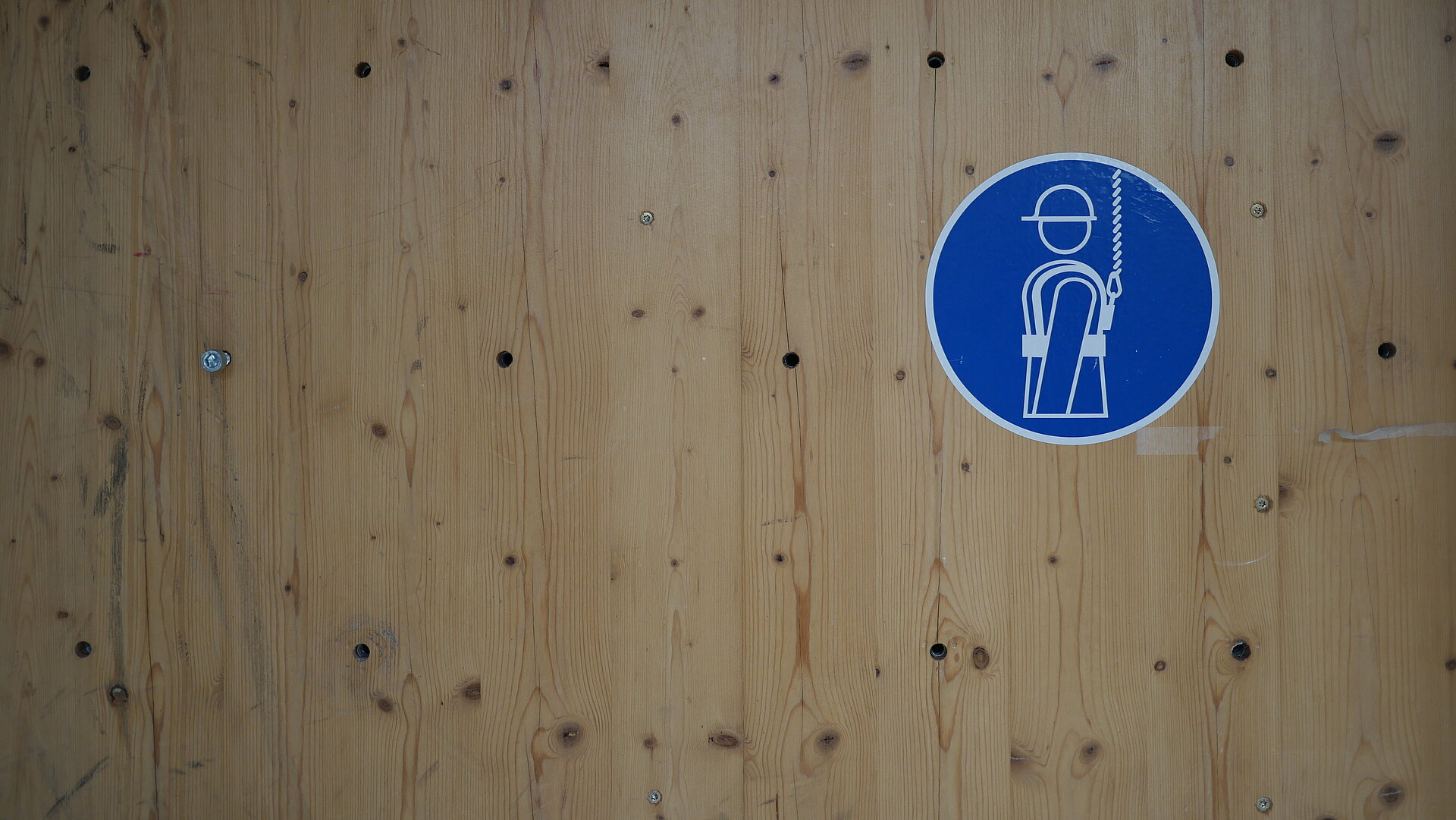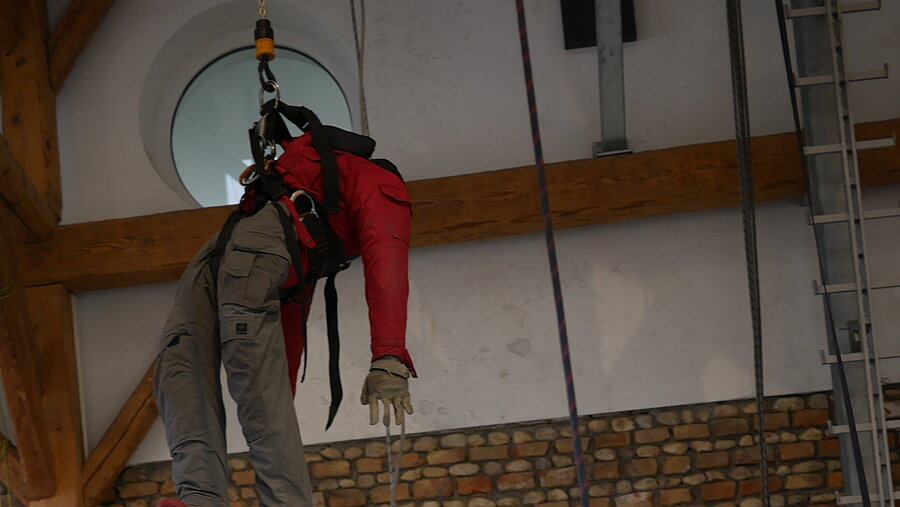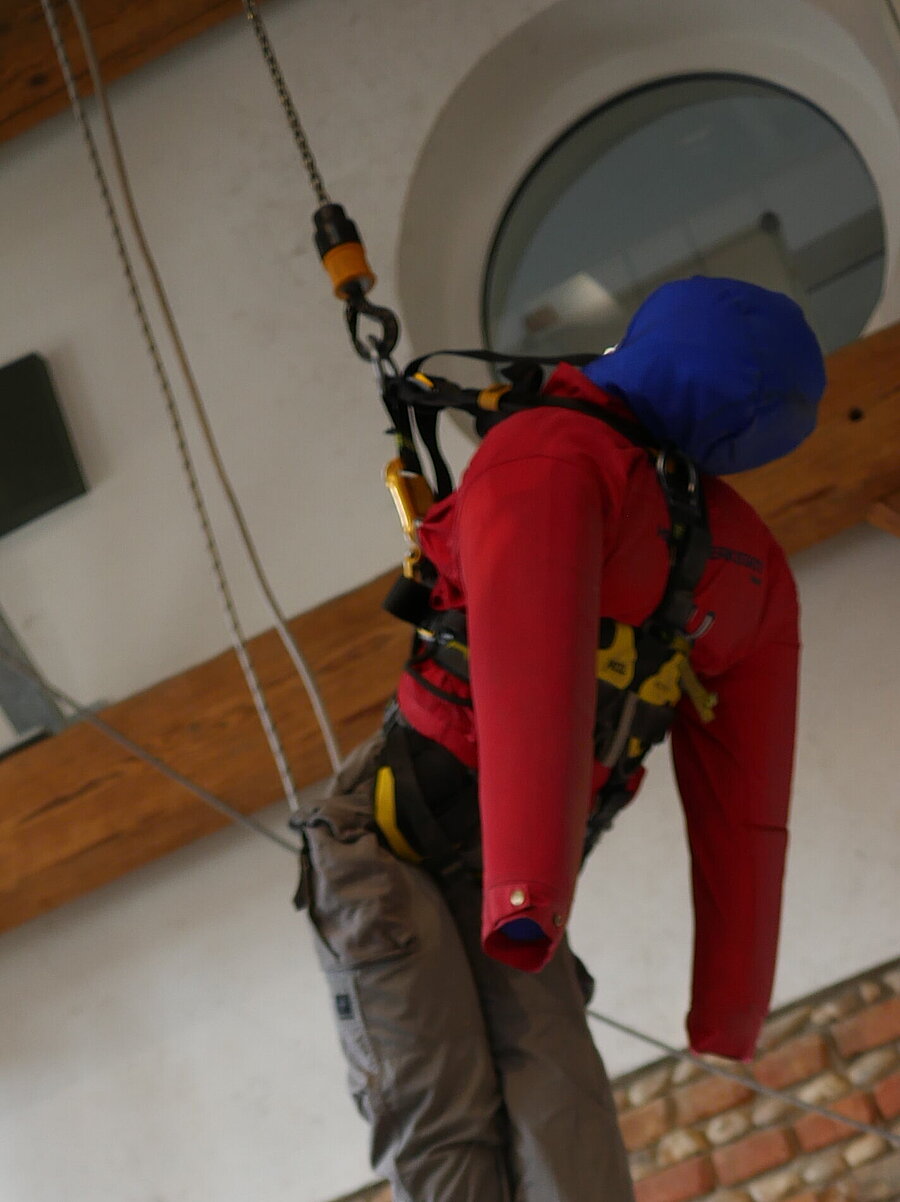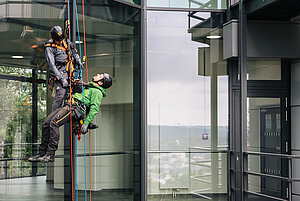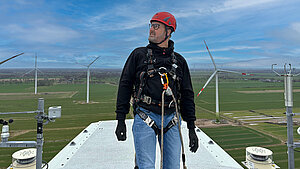What is suspension trauma and how does it come about?
Simply put, suspension trauma is a circulatory shock and occurs when someone remains for a long time with little movement in a hanging and thus unnatural position for a human being - especially when the body hangs vertically downwards. If the person is secured by a fall protection system, this may be the case if there has been a fall into a fall arrest device (safety harness) and the person:
- is injured and can no longer move at all or only to a limited extent
- is unconscious
- did not use the safety harness as intended
- did not carry out a suspension test with the safety harness and did not set it up properly
The blood eventually collects in the lower part of the body, in the drooping limbs, impairing the blood circulation. (To a lesser extent, this effect is comparable to the minor circulatory problems arising from standing upright for too long.) Worse yet, a constriction of the blood vessels can be caused by the life-saving harnesses cutting into the wearer’s body. As a result, the blood circulation can stall even faster and lead to suspension trauma.
The disturbance of blood flow leads to unconsciousness and danger to life.
The blood flow to the brain is affected by the hanging position, which can result in a lack of oxygen and an accumulation of carbon dioxide in the blood. This can ultimately cause the person concerned to lose consciousness. Aside from damage to other organs, further consequences of this disturbance of blood circulation and unconsciousness include an acute danger to life!
How do you recognize suspension trauma?
In principle, suspension trauma can occur after any fall into a PPE system under the conditions set out above. The risk increases if movements are restricted or made impossible altogether. Quick action is of the essence - both by the fall victim and the person witnessing the incident.
If you have sustained a fall yourself, you may experience, for example, dizziness, numbness in the limbs or various problems with the cardiovascular system. However, you may also encounter none of this or these symptoms may not necessarily be noticeable after the shock of the fall.
If you are an observer of the fall, a pale skin or disorientation of the fall victim can be an indication of suspension trauma. In any event, unconsciousness is THE warning signal that must be taken seriously: Whenever observing a fall resulting in unconsciousness, immediately think of the possibility of suspension trauma! The observer may not be able to detect other symptoms, and the person may still become unconscious within a very short time.
Suspension trauma - even if seemingly asymptomatic - can occur within a few minutes and usually materialises no later than after 20 minutes. The length of the actual time span varies from person to person. This is why suspension trauma instils so much fear.
Steps to take when suspecting suspension trauma
Since it is, of course, best not to suffer a fall in the first place, take all safety precautions and always remain vigilant while performing your work activities in areas with a fall risk. Unfortunately, falls cannot be prevented altogether. Therefore, please take note of the following recommendations:
Activating the muscles in the legs supports blood circulation
If you have sustained a fall yourself and are still conscious, you should do everything possible to support your blood circulation. You can do this by activating your leg muscles. This activation turns your legs into a pump, conveying the blood and maintaining the transport of oxygen to the brain. If equipped with appropriate safety devices or tying your rope into a makeshift loop, you can relieve your legs by putting them in a horizontal position and keeping them active by movement - if you are able to do so. The most beneficial action is to keep the legs moving against resistance. That motion simulates regular walking.
The leg muscles take on an essential pump function in the circulation of the blood, ensuring healthy blood flow. This group of muscles is, for instance, also involved in the reduction of thrombosis (blood clots). If the legs are moved - especially against resistance - the pump function springs into action and activates the flow of blood. Oxygen is transported to the brain and reduces the possibility of unconsciousness.
Notify an emergency doctor and initiate rescue measures
If you have observed the fall of a colleague and you suspect suspension trauma, notify emergency medical services immediately! Suspension trauma is a shock from a medical point of view and therefore needs to be treated by a doctor. In any case, it is important to rescue the fall victim from their predicament as quickly as possible. Make sure you protect yourself. Initiate First Aid measures. Follow the rescue concept. Keep the person in a flat position if they are not responsive or in a position that feels most comfortable to them.
This can minimize the risk of suspension trauma:
Products certified and tested by the manufacturer and by the user are one of the factors for suitable protection against falls and, thus, the risk of suspension trauma. Personal knowledge of the correct use of the protective equipment used and taking the action most suitable for the emergency situation are additional factors. To reduce the risk of suspension trauma, follow these recommendations:
- When choosing your personal protective equipment for fall protection, pay attention to certified quality and compliance with the relevant standards.
- Take advantage of the option to obtain ^professional advice for your fall protection system.
- The risk of suspension trauma can be reduced by using personal protective equipment as intended and by applying the professional expertise acquired in training courses.
- Following the rescue measures also minimises the serious consequences of a fall.
